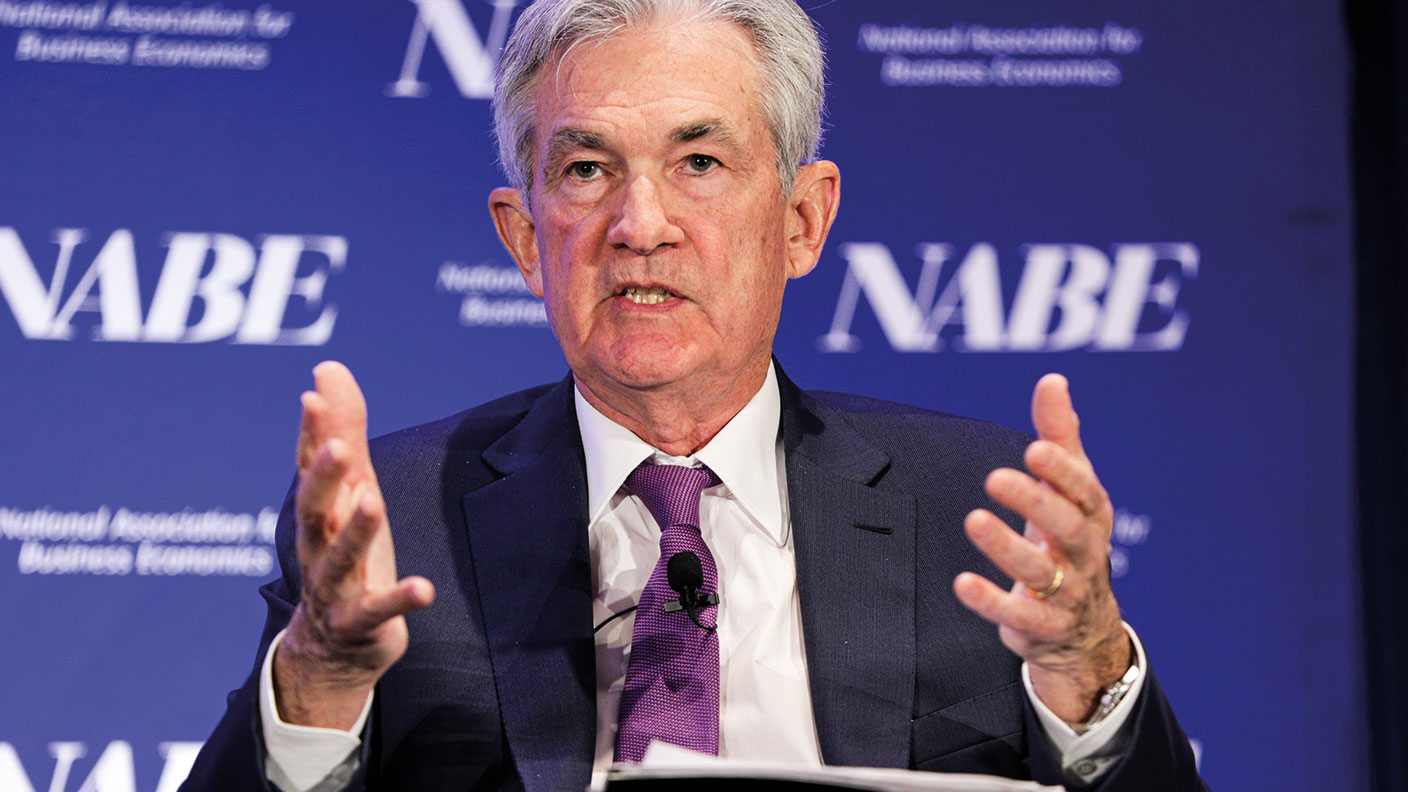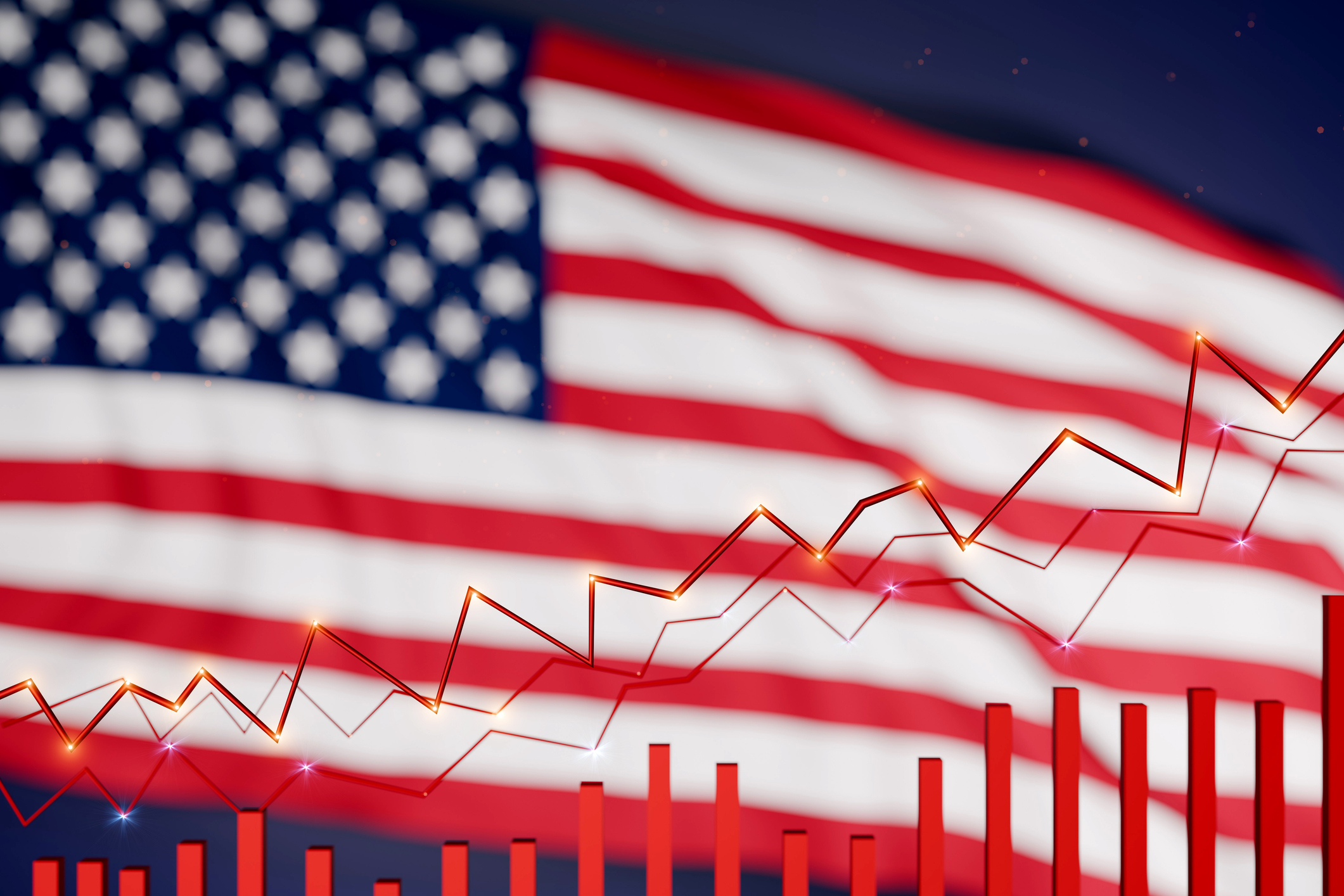Yield curve fear is back
One of the most reliable recession indicators in markets is starting to flash red. Investors should beware


Between war and inflation, markets have a lot to worry about. So fretting over an arcane-sounding bond market phenomenon may not be top of your priority list. But if history is any judge, it should be. We’re talking about the “inverted yield curve”. We explain exactly what a yield curve is here, but, put simply, when a yield curve inverts, it means that the interest rate on long-term government bonds is lower than that on short-term ones. That’s a sign that the market thinks interest rates will have to fall in the future, which implies slower growth, or even a recession.
The good news is that the most significant bit of the yield curve, the gap between the two-year US Treasury bond and the ten-year, is yet to invert. As of Monday, the ten-year yields around 2.3% while the two-year yields 2.1%. The bad news is that bond investors are betting that within three months, the two-year yield will be above the ten. And in the last 40 years, every time that’s happened, a recession has followed within 24 months.
It’s probably not different this time
No indicator is perfect and we only have a limited data set to draw on (recessions don’t happen that often). So it could be different this time. For example, Morgan Stanley strategists believe the curve will indeed invert, but that this time it won’t signal a recession, because of distortions related to quantitative easing. However, as Eoin Treacy notes on FullerTreacyMoney, “rationalisations for why this time is different crop up whenever the yield curve approaches inversion”. But what could prevent the inversion?
MoneyWeek
Subscribe to MoneyWeek today and get your first six magazine issues absolutely FREE

Sign up to Money Morning
Don't miss the latest investment and personal finances news, market analysis, plus money-saving tips with our free twice-daily newsletter
Don't miss the latest investment and personal finances news, market analysis, plus money-saving tips with our free twice-daily newsletter
Inversion is typically driven by markets fearing that Fed will raise interest rates too aggressively for the economy to handle. That’s exactly what’s happening now. So if anything prevents the inversion, it’s likely to be the Fed either getting cold feet, or clear evidence that the economy is genuinely running hot enough to handle rate hikes.
Perhaps a more important question for investors is: if we do face a recession, is there anything you should do?
Recessions are undeniably bad news for stockmarkets. Robert Armstrong, writing in the Financial Times, cites Bank of America’s Stephen Suttmeier, who reckons that “during the average recession, the S&P 500 drops by a third over 13 months”. Yet history also suggests that markets typically don’t hit a top until the inversion has happened, which implies the US market could still have a way to rise before it goes down. So despite the indicator’s strong track record, trying to use it to time the market is futile. A better bet is to make sure you have cash to take advantage of any opportunities that arise; and focus on buying at low valuations, rather than predicting the future.
Get the latest financial news, insights and expert analysis from our award-winning MoneyWeek team, to help you understand what really matters when it comes to your finances.
John Stepek is a senior reporter at Bloomberg News and a former editor of MoneyWeek magazine. He graduated from Strathclyde University with a degree in psychology in 1996 and has always been fascinated by the gap between the way the market works in theory and the way it works in practice, and by how our deep-rooted instincts work against our best interests as investors.
He started out in journalism by writing articles about the specific business challenges facing family firms. In 2003, he took a job on the finance desk of Teletext, where he spent two years covering the markets and breaking financial news.
His work has been published in Families in Business, Shares magazine, Spear's Magazine, The Sunday Times, and The Spectator among others. He has also appeared as an expert commentator on BBC Radio 4's Today programme, BBC Radio Scotland, Newsnight, Daily Politics and Bloomberg. His first book, on contrarian investing, The Sceptical Investor, was released in March 2019. You can follow John on Twitter at @john_stepek.
-
 ‘Why I have ditched my Help to Buy ISA for cash savings and the stock market’
‘Why I have ditched my Help to Buy ISA for cash savings and the stock market’Without the 25% bonus, my Help to Buy ISA is effectively redundant, says MoneyWeek writer Sam Walker.
-
 Is your inheritance tax allowance cut if you sell to downsize or sell your home to pay for care?
Is your inheritance tax allowance cut if you sell to downsize or sell your home to pay for care?Downsizing relief is a little-known benefit that could save your loved ones tens of thousands of pounds in inheritance tax after you’ve died.
-
 Stock markets have a mountain to climb: opt for resilience, growth and value
Stock markets have a mountain to climb: opt for resilience, growth and valueOpinion Julian Wheeler, partner and US equity specialist, Shard Capital, highlights three US stocks where he would put his money
-
 The steady rise of stablecoins
The steady rise of stablecoinsInnovations in cryptocurrency have created stablecoins, a new form of money. Trump is an enthusiastic supporter, but its benefits are not yet clear
-
 SRT Marine Systems: A leader in marine technology
SRT Marine Systems: A leader in marine technologySRT Marine Systems is thriving and has a bulging order book, says Dr Michael Tubbs
-
 Goodwin: A superlative British manufacturer to buy now
Goodwin: A superlative British manufacturer to buy nowVeteran engineering group Goodwin has created a new profit engine. But following its tremendous run, can investors still afford the shares?
-
 A change in leadership: Is US stock market exceptionalism over?
A change in leadership: Is US stock market exceptionalism over?US stocks trailed the rest of the world in 2025. Is this a sign that a long-overdue shift is underway?
-
 A reckoning is coming for unnecessary investment trusts
A reckoning is coming for unnecessary investment trustsInvestment trusts that don’t use their structural advantages will find it increasingly hard to survive, says Rupert Hargreaves
-
 Metals and AI power emerging markets
Metals and AI power emerging marketsThis year’s big emerging market winners have tended to offer exposure to one of 2025’s two winning trends – AI-focused tech and the global metals rally
-
 8 of the best houses for sale with beautiful fireplaces
8 of the best houses for sale with beautiful fireplacesThe best houses for sale with beautiful fireplaces – from a 15th-century cottage in Kent to a 17th-century palazzo in Oxfordshire
